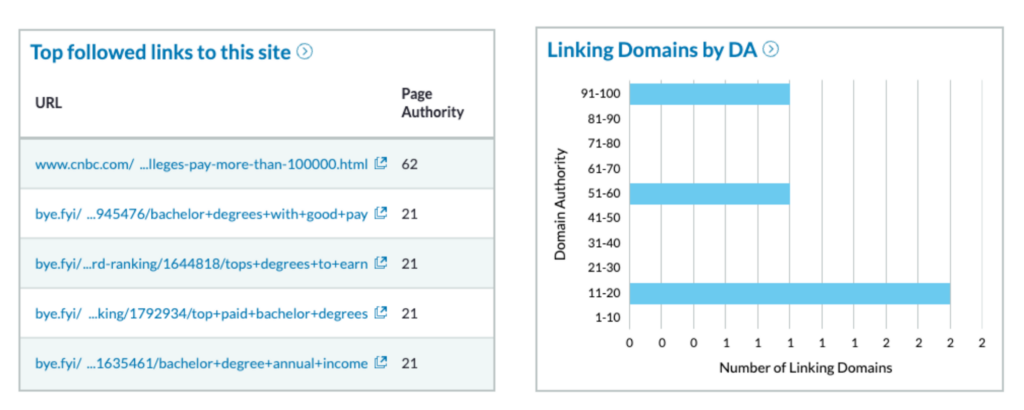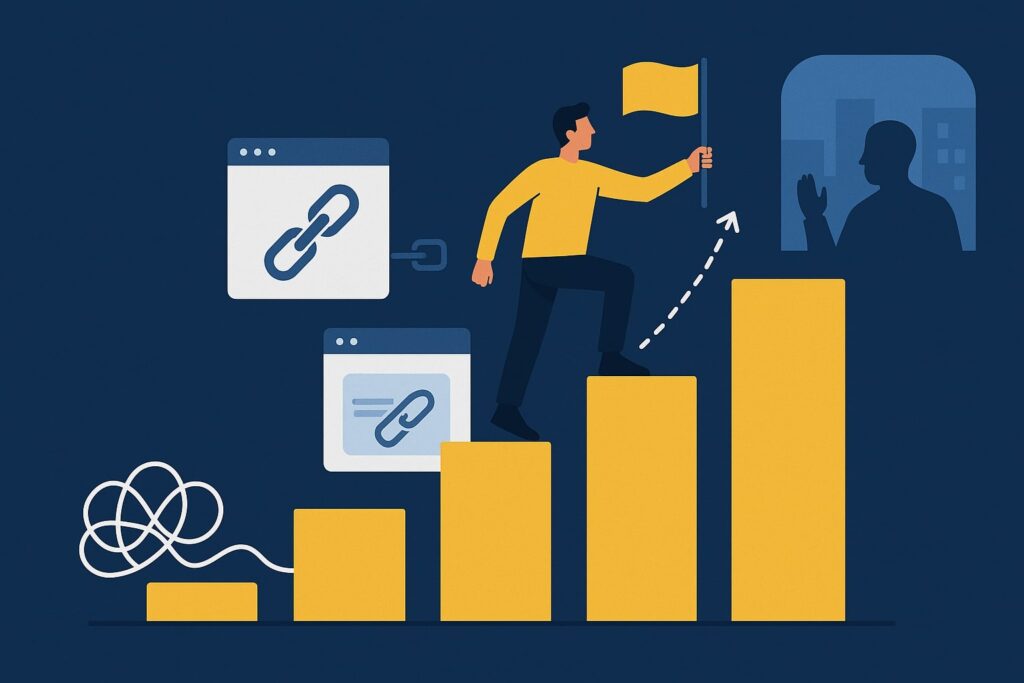Recently a LinkedIn post showed up in my feed.
Posted by a popular contributor to SEO-related topics, it’s presented as a case study highlighting a “successful” link-building campaign that was run for one of the author’s clients.
The post shows the steps taken to produce the content, which seems to be a solid approach to producing an article supported by data.
It also makes a few claims, which are really at the core of why focusing on earning backlinks from high-DA publishers – especially when there’s no focus or thought to the quantity of backlinks needed in order for the page to have a competitive profile.
Outside of the process the team used to create the content for their client, a number of statements appear to point to the success of the aritcle:
“This PR link-building campaign generated massive links and coverage for our client on top-tier websites including CNBC (DR 92), and many other news websites.”
“…if you create unique and interesting research in any industry that is relevant to your website, and if you pitch it to relevant journalists, you can consistently earn massive links in high-tier media such as CNBC, New York Post, Bloomberg, and The Guardian.”
“I hope the above case study is inspirational and will put you on fire to take similar action and earn massive links”
While I may have a difference of opinion when it comes to the quantification of the word “massive” (and hey, I over-use awesome, so no qualms about a word’s over-use), it pales in comparison to the differences between what the O.P. and I would separately consider to be a successful campaign.
Very clearly, their focus is on high-DA links, and – if the post is taken at face value – nothing else.
Here’s the image provided for the LinkedIn post:
What was the outcome of the links? Was there any impact to organic visibility of the page receiving the links?
So I poked around a bit, turning to Moz for some backlink numbers, in order to get a sense for just how many links qualify as “massive”. From Moz:
(the original article went live in May 2022 so there’s not a ‘too new’ issue in to play – the CNBC article went live in June)
Not quite the count I was expecting. I don’t have a particular number that would qualify to me as “massive”, but I did expect a higher number. Still, Moz’s database is not Google’s database, and I don’t have Search Console access of course, so I can’t see the links Google has discovered. It’s probably higher than 7.
And – some good news! I do see the CNBC article that was used as the image in the post, locking in a solid 62-DA link (Ahref’s DR was used in the post instead of DA).

Here’s what I’m struggling with – our focus at Citation Labs is demonstrating the impact of our campaigns through an improvement to ranking. And we measure those improvements against a control group of similar pages that are not part of the campaign.
In that light, who cares if it’s only 7 links, so long as they drive impact, right? Maybe it was only one link from CNBC, or maybe there were 20 or 200 more that didn’t show up here (just realized 200 for me is the entry point in qualifying for ‘massive’ links [of any DA] driven by a single outreach campaign).
If that 1 or 7 links or however many drove solid rankings performance that generated qualified organic traffic and revenue, regardless of the count, the campaign would be a massive success!
So when we’re celebrating successes at The Labs (trying to make that a thing),, it’s because we’re able to correlate the links we’ve built to the positive impact we’re seeing on organic rank, traffic, and revenue.
Let’s be fair to this article and the statements made therein, and just look at impact.
Here’s the Organic Research report from SEMRush for this page (callouts in red added by Yours Truly):
Hrmph. Not quite the impact I was expecting. It did start ranking for keywords (you can see the count at 12), but it looks like that’s trailed off since the page was published, and also no noted organic traffic based on KWs SEMR is tracking for this page.
Even the CNBC page linking to the article hasn’t broken through, and what traffic it was getting, dried up pretty quickly:

https://www.cnbc.com/…/-colleges-pay-more-than-100000.html
All that to write, I’m not seeing much to tout as success, based on the way we measure success for our link-building campaigns.
Here’s why – in our opinion – ‘authority’-related metrics are not the bees’ knees they’re often made out to be:
- A particular topic may be represented on the site, but higher-authority sites often cover much more diverse content
- The content gets paginated to oblivion’ very quickly, potentially within hours/days
- Larger sites have exponentially more external links, diluting the equity that’s passed through the href
- Including a data study in the article (data studies or some useful piece of unique content are often table stakes for earning high-DA links) is much more expensive to produce
Is authority bad? Absolutely not!
I’m not attempting to make a statement indicating earning a link from a high DA/DR/AS/etc. domain is bad in any way. On the contrary, they can be solid links, and it’s something that can be passed around internally for some solid ‘attas’ from higher-ups. Everything else equal, I would expect high-DA links to out-perform the same number of links of any DA level. It’s just rarely – and maybe never – equal, for the reasons stated above.
What I AM suggesting is that focusing on authority as a qualifying metric is the wrong focus. Re-allocating the time spent to earn this one CNBC link (ok ok there are others I’m sure and I’m pretty sure I saw some when I googled the title of the CNBC article), easily could have resulted in 10, or 25 or even 80 links from other sites without any consideration for their level of authority.
And earning enough links to be competitive is really the key here.The page from the aforementioned campaign is up against a decent amount of competition – plus, the topic is ‘relevant-adjacent’, so for links to really move the needle, the backlink profile might even need to be overbuilt a bit, depending on the strength of the competition.
Here’s how the backlink profile of the subject page measures against the top 10 competitors for each of the 16 KWs that SEMRush is tracking search results for:
So it turns out, we really do need ‘massive’ links after all. Independent of authority level.
Resources for Further Exploration
If you’re evaluating or refining your link-building strategies, here are resources to help you make data-driven decisions and achieve impactful results:
- ROI Google Sheet Template: Assess the effectiveness of your link-building campaigns and quantify their impact with this easy-to-use spreadsheet. Access it here.
- Link Launch Tool: Streamline and optimize your link-building campaigns with data-driven insights to ensure measurable success. Try it here.
- Learn More: Discover advanced link-building strategies and insights to take your campaigns to the next level. Learn more here.




